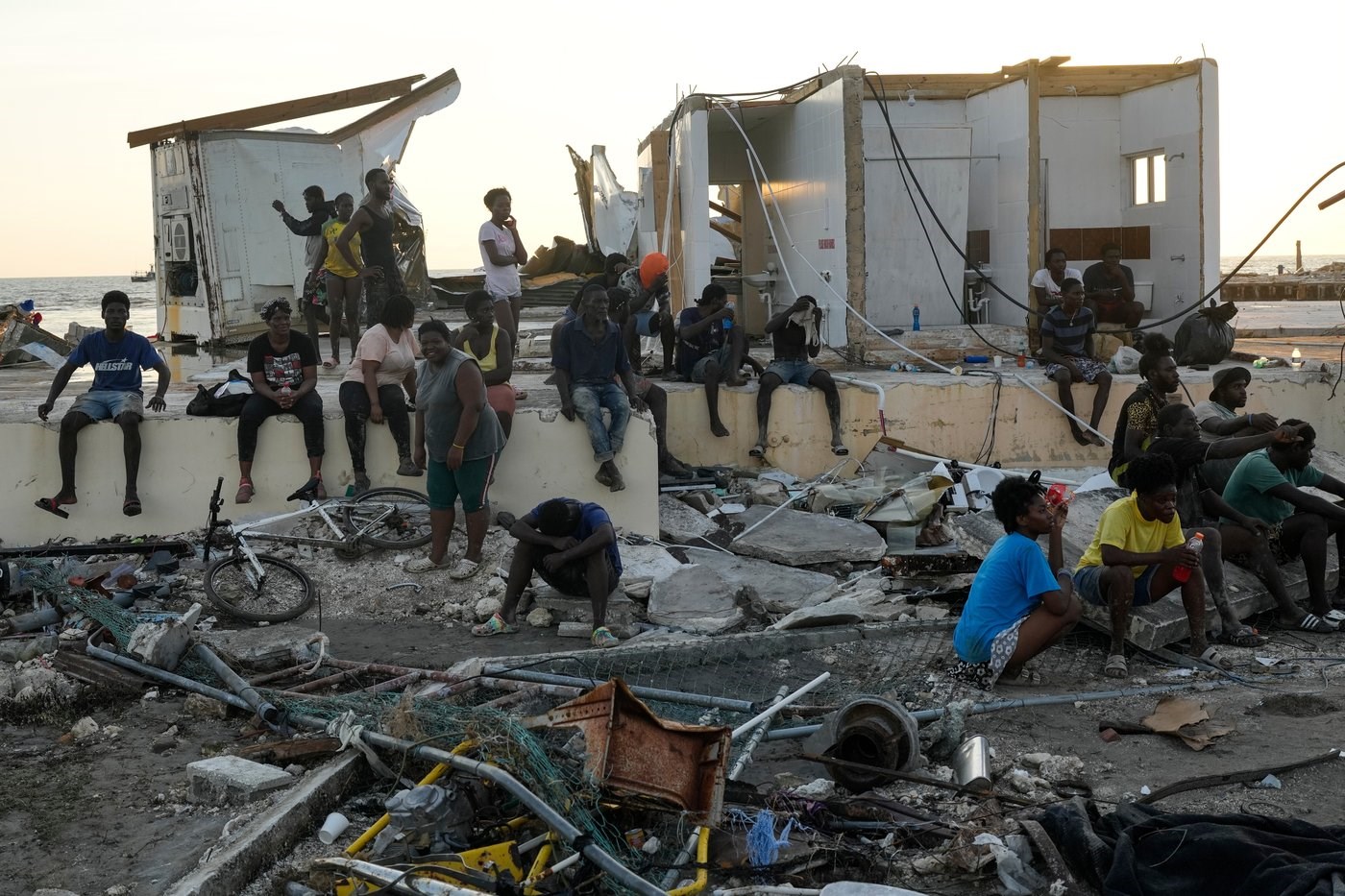
People gather among debris near a bridge in Black River, Jamaica, Thursday, Oct. 30, 2025, in the aftermath of Hurricane Melissa. (AP Photo/Matias Delacroix)
Republished October 31, 2025 - 9:44 AM
Original Publication Date October 31, 2025 - 7:11 AM
BLACK RIVER, Jamaica (AP) — The road from Jamaica’s capital to the seaside town of Black River was known for its lush bamboo forest that formed a natural tunnel and glowed green in the bright sun.
But its famed bamboo stalks lay strewn and shredded across the road in Hurricane Melissa’s aftermath Thursday, forcing Jamaican soldiers to chop at them with machetes to partially reopen the main route to Black River, which the government has described as the storm's “ground zero.”
Melissa came ashore just west of the town on Tuesday, leaving up to 90% of all structures in Black River without roofs as it snapped power lines and toppled concrete structures.
One of the strongest Atlantic hurricanes to make landfall, Melissa has been blamed for at least 19 deaths in Jamaica, and 31 in nearby Haiti.
In the ruins of Black River, people scrambled for relief.
“People are hungry,” said Monique Powell as she stood watch over a stash of grocery and household items for herself and a group of residents from Greenfield, one of the many hurricane-torn communities on the outskirts of Black River.
Helicopters hovered over isolated communities, dropping food as crews rushed to reopen roads.
“You are not forgotten,” said Daryl Vaz, energy and transport minister.
More than 60% of Jamaica remains without power, and nearly half of its water systems are offline.
An influx of storm-weary people desperate for aid descended on food establishments in Black River that were giving away their goods. Much of the items had become water-soaked and damaged as fierce winds from the Category 5 storm tore through buildings and sent 15-foot (5-meter) sea surges crashing into aged structures.
Left behind was a smelly, slimy mix of mud, sand and seawater covering mangled cars and building fragments that lay strewn throughout the town’s narrow streets.
“Everything is gone,” said Michelle Barnes as she and her 13-year-old daughter secured their portion of the handouts.
Along the muddy and narrow streets of the historic seaside town choked by debris, men, women and children moved briskly with multiple bags, some with boxes or any container they could find filled with relief supplies and balanced atop their heads.
Meanwhile, teenage boys and men ferried bag after bag of supplies on motorcycles and bicycles under a sweltering afternoon sun.
“My roof is gone and even the windows,” said Sadique Blair as she tried to shelter from the unforgiving sun.
A historic port flattened
Named after one of Jamaica’s longest rivers, Black River is one of the island's oldest towns and the first to have electricity, according to Jamaica's National Heritage Trust.
Black River became the capital of the southern parish of St. Elizabeth in the late 1770s and served as a bustling seaport up into the 1900s. Over the years, nearby towns like Santa Cruz and Junction slowly replaced Black River as the commercial center in Jamaica’s breadbasket region.
Some wondered if the storm was an opportunity for Black River to rebuild and regain its former glory as the place for trade and commerce, which had been fading with age.
A teary-eyed Marcia Green stared at the rubble that was once her hairdressing shop.
“Everything has been destroyed,” she said. “I had just bought some new equipment and fixtures because I was about to move to a new location to refresh my business. But nothing is left.”
For many in the southwestern parish, it’s a double dose of disaster.
In July 2024, Hurricane Beryl’s outer bands battered Jamaica’s southern coast. The seaside communities in the southern parishes of Clarendon, Manchester and St. Elizabeth were the worst affected, and many were still picking up the pieces when Hurricane Melissa struck.
A trail of deaths
In the latest storm, several of the 19 deaths reported in Jamaica were in St. Elizabeth parish, according to police.
In nearby Haiti, authorities reported at least 31 people killed and 21 others missing, mostly in the country’s southern region. More than 15,800 people also remained in shelters.
Haiti’s Civil Protection Agency said Hurricane Melissa killed at least 20 people, including 10 children, in Petit-Goâve, where more than 160 homes were damaged and 80 others destroyed.
No deaths were reported in Cuba, where the Civil Defense evacuated more than 735,000 people across the eastern part of the island before the storm made landfall early Wednesday.
Cuban officials reported losses of roofs, power lines and fiber optic telecommunications cables, as well as roads cut off, isolating communities, and heavy losses in banana, cassava and coffee plantations.
Many communities were still without electricity, internet and telephone service.
Melissa made landfall in southwest Jamaica on Tuesday as a Category 5 hurricane with top winds of 185 mph (295 kph). It tied strength records for making landfall, both in wind speed and barometric pressure.
News from © The Associated Press, 2025